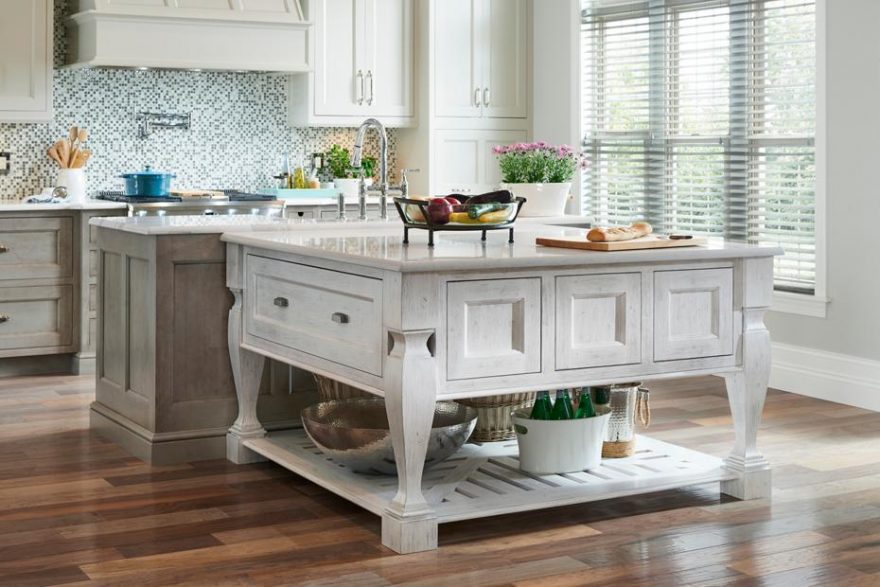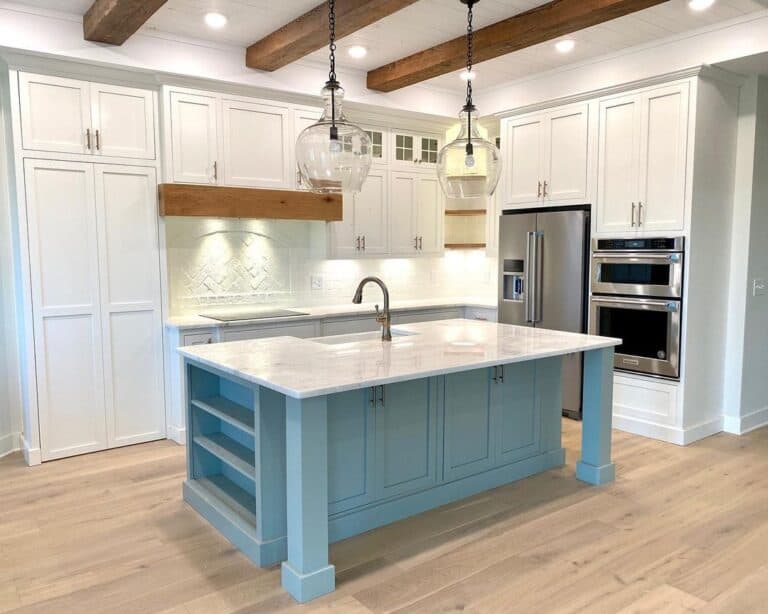Crucial Variables to Take Into Consideration When Picking Legs For Kitchen Area Island
Choosing the appropriate legs for a kitchen island entails a cautious evaluation of multiple variables that can dramatically affect both performance and aesthetic allure. Amongst these, the option of product plays a crucial function in guaranteeing resilience, while the layout needs to complement the existing decor. Considerations such as elevation and weight assistance are necessary for stability and convenience. As we explore these components, it ends up being clear that each choice can have significant implications for the general kitchen experience. What nuances should be taken into consideration in each of these classifications to achieve the suitable balance?
Material Options
When choosing legs for a cooking area island, understanding the different product options is vital for attaining both aesthetic appeal and architectural honesty (Legs For Kitchen Island). The choice of material considerably affects not just the resilience of the island however additionally its total design and functionality
Wood is a prominent selection, supplying warmth and flexibility. Solid woods, such as oak or maple, supply toughness and can be tarnished or painted to match the kitchen design. Metal legs, typically made from stainless-steel or functioned iron, add a modern-day and commercial feeling while making certain durability and stability. These products are immune to put on and can sustain significant weight, making them excellent for bigger islands.
Another alternative is crafted materials, like MDF or plywood, which can be much more cost-effective while still supplying a variety of surfaces. They might not supply the exact same level of security as strong wood or steel. Legs For Kitchen Island. Finally, materials such as acrylic or glass can create a modern appearance, though they may call for added support to ensure security.
Inevitably, the selection of product for kitchen area island legs should straighten with the preferred capability and the general theme of the cooking area.
Design and Design

When considering style, the shape and finish of the legs are crucial. Tapered legs can provide a sense of lightness and elegance, while thicker, more durable legs can share toughness and security. In addition, the surface-- be it painted, discolored, or natural-- should complement the kitchen cabinetry and kitchen counter products to produce a unified look.
Moreover, the design of the legs can additionally mirror personal taste. Custom or decorative legs, such as those including complex carvings or distinct geometric forms, can act as focal factors, adding personality and individuality to the kitchen area. Ultimately, the right selection will not only boost performance but additionally raise the aesthetic appeal, making the cooking area island a standout function of the home.
Height Factors To Consider
Selecting the suitable elevation for kitchen area island legs is important, as it directly influences both performance and comfort. The typical height for a kitchen island commonly ranges from 36 to 42 inches, aligning with typical countertop elevations. A 36-inch height is suitable for cooking and cooking, enabling comfortable usage of kitchen area appliances and tools. Alternatively, a height of 42 inches is usually liked for islands intended for bar seating, suiting taller stools and supplying a casual eating experience.

It is additionally crucial to make up users' elevations and preferences. Customizing the elevation can guarantee a comfy experience for all member of the family, making the kitchen area island a more functional and satisfying space.
Weight Assistance
Guaranteeing ample weight support for cooking area island legs is crucial for both safety and performance. The kitchen island commonly serves several purposes, including cooking, dining, and extra storage space, requiring a durable support framework. When picking legs, it is important to think about the overall weight capability called for based on the island's meant usage and the products that will be put on it.
The selection of material for the legs plays a considerable duty in their weight-bearing capabilities. Solid wood, steel, and sturdy composites normally give superior stamina contrasted to lighter products. Additionally, the style of the legs-- whether they are directly, tapered, or have a pedestal kind-- can influence their ability to distribute weight successfully throughout the framework.
Moreover, the leg placement ought to be tactically intended to boost security. Legs placed at the edges or with a wider base can better support much heavier tons. Constantly consult the producer's specifications concerning tons limitations to make sure that the legs can maintain the desired weight without endangering safety and security. In recap, picking cooking area island legs with ample weight assistance is essential for creating a safe and functional cooking room.
Setup and Maintenance
Proper setup and maintenance of kitchen area island legs are crucial for ensuring durability and stability. This typically involves protecting the legs to the island base making use of suitable bolts, guaranteeing that the legs are degree and aligned.
When mounted, regular upkeep is necessary to protect the honesty and appearance of the legs - Legs For Kitchen Island. For wooden legs, routine cleansing with a damp fabric and application of ideal wood polish can protect against moisture damage and keep their coating. Metal legs may call for a mild cleaning service to get rid of oil and Clicking Here grime, complied with by a completely dry towel to stop rust development
Additionally, examine the legs on a regular basis for indicators of wear or damages, try this out such as splits or loosened joints. Tightening up screws or screws as required can additionally lengthen the life-span of the legs. By sticking to these installment and upkeep methods, house owners can make certain that their cooking area island continues to be strong and aesthetically appealing for many years to find.
Final Thought

Aesthetic coherence is critical in choosing the style and style of legs for a kitchen island, as these components greatly influence the total ambiance of the area. Conical legs can supply a feeling of agility and elegance, while thicker, more robust legs can share stamina and stability.Selecting the ideal height for cooking area island legs is important, as it straight affects both performance and comfort. In summary, picking kitchen area island legs with adequate weight assistance is important for producing a useful and risk-free culinary area.
In conclusion, choosing legs Visit Website for a kitchen island requires mindful factor to consider of various variables, including product alternatives, style, height, weight assistance, and installation.